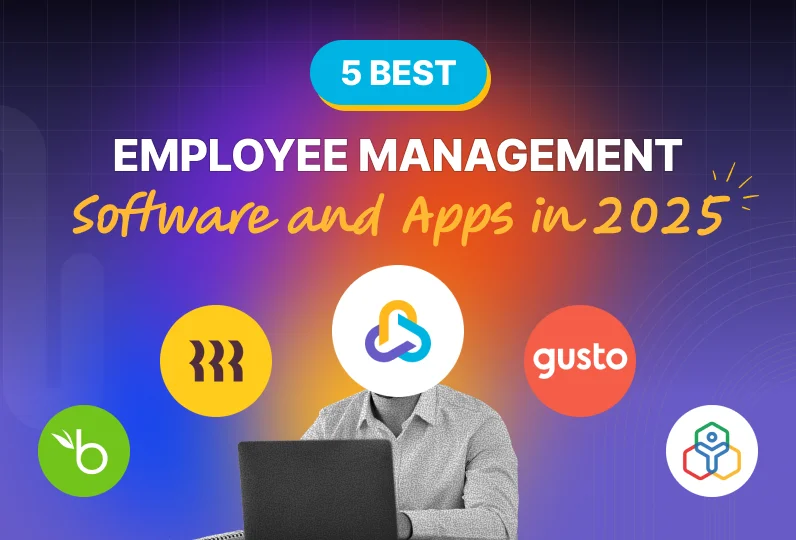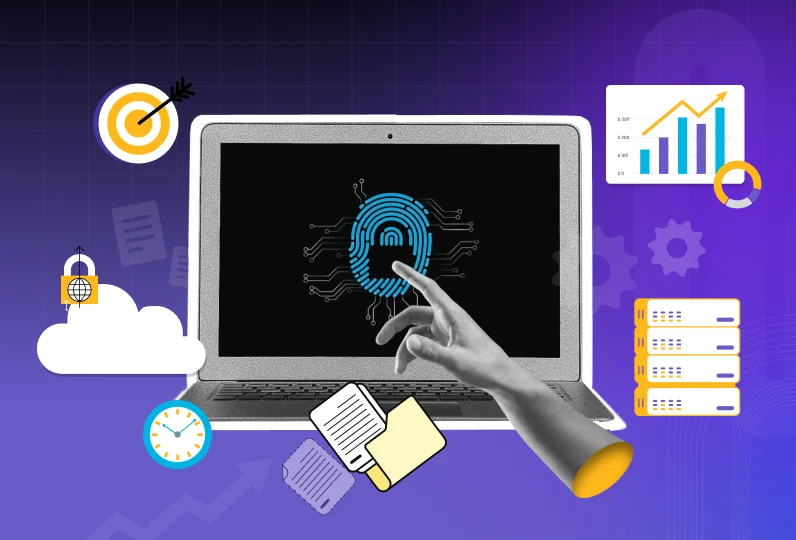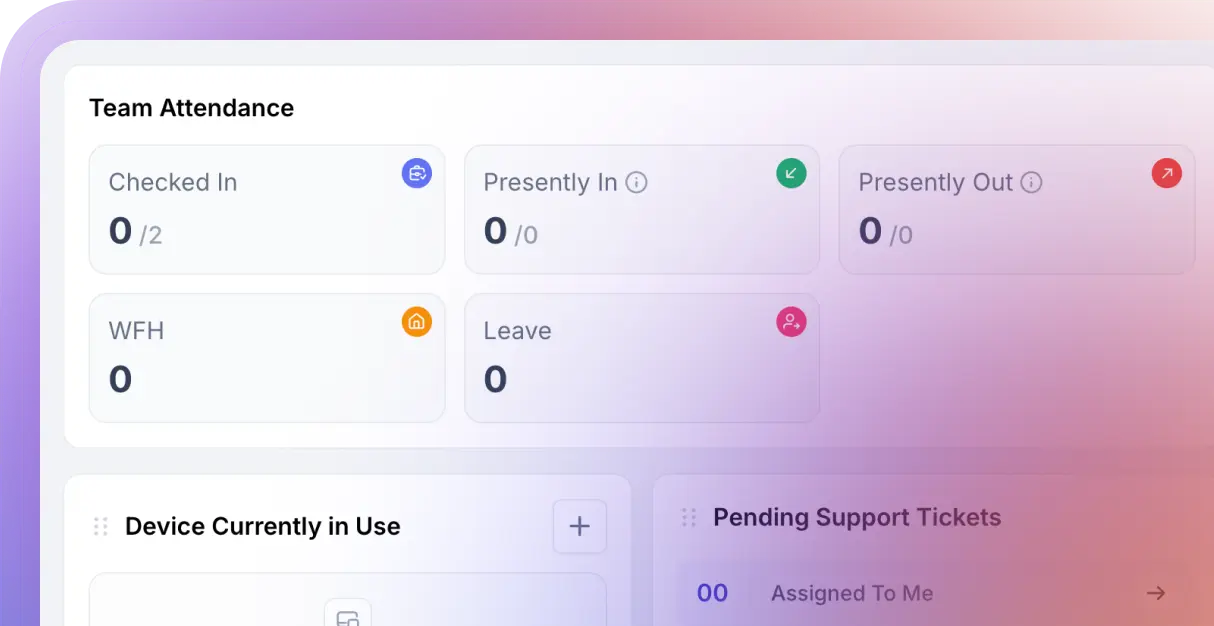If you’re steering a growing business, you already know the hidden costs of chaos, like duplicated efforts, missed deadlines, and projects that stall because priorities slip through the cracks. Today’s markets don’t give you room for that. Clients expect faster turnarounds, teams want clarity, and leadership demands results that prove ROI.
Work Management System (WMS) gives you a competitive advantage and helps you sustain through the evolving market. From unifying project execution to giving you real-time visibility into every department’s workload, a WMS helps ambitious companies stay lean, aligned, and ready to scale without compromising quality or burning out teams.
This blog reveals what Work Management Software (WMS) truly means for your business, how it eliminates silos, sharpens accountability, and sets you up to outperform competitors who still rely on scattered tools. If you’re looking for an edge in operational excellence, take a look at the blog and get the insights.
What is a Work Management System (WMS)?
A Work Management System (WMS) is a unified platform that helps your organization plan, organize, and execute work, whether that’s everyday tasks, strategic projects, or multi-team initiatives. Instead of relying on scattered emails, spreadsheets, or endless meetings to track who’s responsible for what, a WMS gives your teams a clear, real-time view of priorities, deadlines, and progress, all in one place.
For instance, if your operations team is rolling out a new process across departments, a WMS ensures every milestone is documented, assigned, and monitored. Hence, no more bottlenecks or guesswork. It’s about working smarter and giving leaders visibility to make informed decisions and empowering teams to deliver high-quality outcomes without the usual confusion or delays.
Work Management System vs Project Management System: What’s the Difference?
A Work Management System (WMS) is built to handle all kinds of work across your business, from daily tasks to team workflows and long-running operations. It keeps everything moving smoothly, no matter the type or length of work. On the other hand, a Project Management System (PMS) is focused on managing specific projects that have clear start and end dates, milestones, and deliverables.
Here’s a quick table that breaks down the difference even more clearly:
| Work Management System (WMS) | Project Management System (PMS) | |
| What it manages | All work, tasks, processes, long-term operations | Individual projects with defined timelines |
| Timeframe | Ongoing, continuous | Starts and finishes with the project |
| Who uses it | Whole organization, across departments | Mainly project teams or PM offices |
| Main goal | Improve overall productivity & coordination | Complete specific projects on time & budget |
What are the Roles and Responsibilities That the Work Management System Looks After?
A modern Work Management System is like the operations nerve center for your business. It doesn’t just organize tasks but actively drives your teams to work smarter, faster, and more collaboratively. Here’s what it handles for your organization:
Workflow Planning
A work management software lays the groundwork for how your business operates on a day-to-day basis. It enables you to map out detailed workflows that closely mirror actual business processes, defining each stage from start to finish.
It eliminates guesswork and helps teams anticipate dependencies before issues arise. By turning complex operations into clear, repeatable workflows, your company can scale projects confidently, reduce costly missteps, and maintain momentum even under tight deadlines.
Task Delegation
Rather than managers spending hours juggling who does what, your WMS handles smart task assignments. It considers workloads, skill sets, and deadlines, then automatically routes tasks to the most suitable team members.
This ensures projects move forward without bottlenecks or overloading key people. With better delegation, you free up leadership bandwidth, keep employees engaged in work that fits their strengths, and maintain a balanced, high-performing team.
Work Execution
A powerful WMS acts as the single source of truth for all ongoing work, whether it’s client deliverables, internal initiatives, or compliance processes. Teams can execute with full visibility, track each step in real-time, and keep everyone aligned.
This level of clarity cuts down on duplication, endless update meetings, and the chaos of scattered spreadsheets or emails. Ultimately, your organization becomes sharper, faster, and more responsive to shifting priorities.
Team Collaboration
When you have multiple departments working on shared goals, communication gaps can cost serious time and money. A WMS bridges these gaps by providing integrated tools for sharing documents, managing approvals, and capturing discussions in one place.
Everyone stays in sync, no matter where they are. It creates a collaborative environment where ideas flow freely, blockers surface early, and teams can pivot together without losing direction.
Time Management
Missed deadlines or poorly allocated resources can derail even the best projects. A WMS gives you proactive control by tracking timelines, highlighting upcoming or overdue work, and forecasting capacity.
It allows managers to reassign or adjust workloads before small issues become critical. It’s how you protect the client commitments, keep budgets intact, and build a reputation for reliability in a competitive market.
Data Analytics
Beyond organizing tasks, a WMS gathers valuable data on how your business actually operates. It turns raw activity into meaningful insights, revealing process slowdowns, underperforming areas, or emerging opportunities.
With these analytics, you can make decisions rooted in real performance metrics, not gut feelings. It means refining strategies, justifying investments, and driving long-term growth with confidence.
How Work Management Systems (WMS) Help Streamline Processes?
An effective Work Management Software (WMS) brings people, processes, and data together, breaking down barriers that typically slow businesses down. Whether you’re running an IT services company, a SaaS firm, or a growing startup, a WMS helps keep everyone aligned and working toward the same goals. Here’s how it makes that possible:
Inspires Cross-Collaboration
Modern business can’t afford teams working in isolation or in the same office sometimes. In this scenario, cross-functional collaboration helps deliver complex solutions faster and more innovatively. A WMS brings developers, designers, QA specialists, and even non-technical stakeholders onto one unified platform so everyone stays aligned on shared objectives.
For instance, a software firm building a fintech app can use a WMS to let UI/UX designers drop in wireframes, developers link sprint tickets, and testers log bugs all in the same project space, making collaboration seamless.
Keeps Clients in the Loop
Clients today expect more than end-of-phase updates; they want visibility into how work progresses in real time. A WMS ensures transparency by providing controlled client access to dashboards, timelines, and deliverables, so they always know where things stand.
Suppose an IT company is building a retail ERP for a chain of stores. Instead of waiting for monthly presentations, the client logs into their dedicated WMS portal anytime to see which inventory or billing modules are complete, which are in QA, and what’s scheduled next.
They can review progress bars, drop comments on specific tasks, and instantly approve completed features, cutting down weeks of back-and-forth emails and accelerating the overall delivery. This builds trust and keeps the partnership efficient and collaborative.
Manages All Work in One Spot, From Anywhere
Fragmented tools slow teams down and create data silos, making it hard to see the bigger picture. A WMS solves this by centralizing all projects, tasks, and documentation in one secure platform that gives an essential advantage for hybrid or globally distributed teams.
For example, there is an IT company that has hired infrastructure engineers in Poland, product managers in the U.S., DevOps specialists in India, and other professionals from different countries. Instead of juggling Slack threads, scattered spreadsheets, and countless Jira boards, their managers track every deployment, sprint, and incident response through a single WMS.
This unified view means they catch risks early, keep teams aligned across time zones, and maintain the same level of control as they would with everyone under one roof ultimately driving projects forward without the chaos of disconnected tools.
Automates Repetitive Workflows
Repetitive manual steps take valuable hours and often lead to costly mistakes. A WMS tackles this by automating routine workflows, whether it’s approvals, progress notifications, or handing off tasks, so your teams can zero in on strategic, high-value work instead of administrative busywork.
For example, in an organization a new client signs the agreement, their WMS instantly spins up a predefined onboarding workflow, it creates tasks for provisioning cloud environments, scheduling security audits, and setting up kickoff calls.
Each department gets notified of its responsibilities without endless back-and-forth emails. This means the firm launches new engagements swiftly and professionally, freeing leaders to focus on client strategy and delivery excellence rather than tracking down basic next steps.
Helps With Sales Tracking
Tracking sales activities and pipelines can quickly become messy when data lives in spreadsheets or scattered CRMs. A WMS brings sales tracking into the same environment as project execution, giving leadership a unified view of revenue-driving work alongside delivery timelines. This alignment ensures sales teams aren’t overpromising on capacity and that operations teams can prepare for incoming workloads.
For example, a SaaS development company is building custom platforms for multiple industries. With an MMS, their sales reps log deals and expected start dates right alongside engineering resource plans. As soon as a contract is close to finalizing, the system alerts delivery managers to start capacity planning.
This way, no one scrambles at the last minute, and the company moves from signed deal to kick-off seamlessly, keeping both clients and internal teams confident in execution.
Highlights Priorities and Blockers Early
A WMS makes it easy to spot what’s critical and what’s stuck. By automatically flagging overdue tasks, dependencies, or bottlenecks, it ensures leaders can jump in before small issues turn into major delays. This proactive visibility is essential for managing complex, high-stakes IT projects where missed timelines impact entire roadmaps.
For instance, an IT firm is adopting the cloud on a large scale. With a WMS, project leads get instant alerts if the security audit stalls or if a configuration task takes longer than planned. They can quickly reshuffle workloads or bring in additional experts to keep the timeline intact.
Instead of waiting for weekly status meetings to learn that something is off track, the team handles risks in real time, protecting budgets, delivery dates, and client trust.
Makes Reporting Effortless
A WMS takes the pain out of reporting by pulling real-time data from every project, team, and task into clear, shareable dashboards. No more scrambling to compile spreadsheets or chasing updates across departments, decision makers always have up-to-date insights at their fingertips. This is crucial for staying accountable to clients, investors, or internal leadership.
For example, an organization is managing multiple software development streams for different clients. Instead of manually preparing weekly progress decks, the WMS auto-generates detailed reports on hours logged, milestones completed, and upcoming deliverables. Leadership can instantly spot which projects are ahead, on track, or lagging. This not only saves countless admin hours but also supports faster, evidence-backed strategic decisions.
Want a Work Management System That Actually Delivers? Try CollabCRM
CollabCRM is a business operating system designed to meet the operational demands of fast-growing businesses. Whether you’re managing sales pipelines, product development cycles, or cross-functional client projects, CollabCRM brings clarity to chaos with its intuitive dashboard, workflow automation, and real-time progress tracking.
From assigning tasks and managing dependencies to automating recurring actions and customizing workflows, everything in CollabCRM is built to minimize manual work and maximize productivity.
It optimizes your business processes by:
- Unifying workspace for collaboration across teams
- Integrating communication and file sharing
- Automating repetitive tasks
- Visual reporting and KPI tracking
- Customizing workflows for every team’s needs
CollabCRM equips organizations with the tools to do the right things, at the right time, with full visibility. It transforms fragmented workflows into unified operations and turns daily work into measurable growth.
FAQs on Work Management System
The four main types of work management systems are project management, task management, resource management, and collaboration systems. Each serves a distinct function, ranging from planning and tracking tasks to managing resources and promoting team communication. Together, they help streamline daily operations and keep business workflows aligned and efficient.
CollabCRM is the most popular work management system. The platform helps businesses manage tasks, collaborate across teams, track progress in real-time, and centralize workflows, thereby improving productivity and boosting growth.
A Work Management Software (WMS) is not the same as an ERP (Enterprise Resource Planning) system, but the two can complement each other. While ERP focuses on managing core business processes like finance, inventory, and HR across an organization, WMS is more about planning, tracking, and executing day-to-day work and team collaboration.
In a Work Management System (WMS), a KPI (Key Performance Indicator) is a measurable value that helps track how effectively teams or projects are performing against set goals. KPIs in WMS include metrics like task completion rate, project delivery time, team productivity, resource utilization, and client satisfaction. These indicators give businesses real-time insights to optimize workflows, improve accountability, and make informed decisions.
WMS platforms will evolve with advanced AI-driven automation, real-time analytics, and seamless integration with tools across departments, from CRM to ERP. Expect systems to offer predictive insights, suggest task priorities, automate repetitive actions, and provide personalized dashboards.





